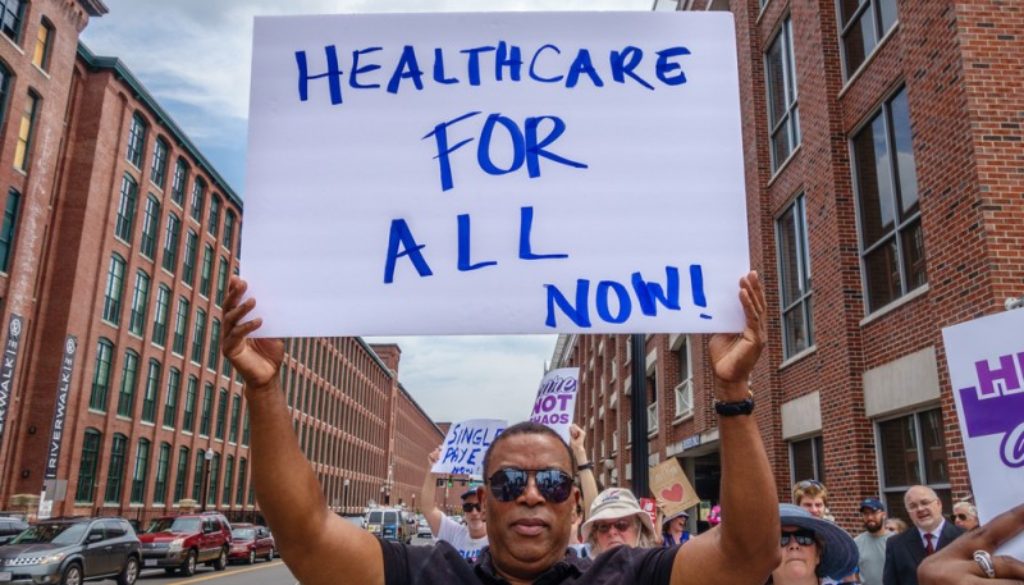Reasons for Optimism in Population Health – Part 1
Julie MaslowskyIn the current climate of political and global tumult, it is easy to feel pessimistic about current and future population health. For example, in my own area of research, teenage pregnancy prevention, the U.S. Department of Health and Human Services has recently announced early termination of the primary sources of funding for evidence-based teenage pregnancy prevention programs. To stay energized in our pursuits to improve population health, it is important to remember the things that are going right, and the places where progress is being made. I queried a half-dozen leading population health researchers to ask them why they maintain optimism about population health in the United States. This two-part post summarizes their thoughts and my own.
Part I
Historical events and long-term (if not short-term) optimism
While most respondents expressed worry and pessimism about the political climate and population health in the short term, they remained optimistic about prospects for longer-term positive change. Respondents remarked that social change in general has historically been a story as much about the failures as successes, full of detours and half-starts before eventual victories.. Major historical victories in equality took decades to accomplish. The Civil Rights Act of 1964, for example, didn’t happen overnight. It took decades of organizing, with origins before Rosa Parks and Martin Luther King Jr. were even born, to build enough political leverage to achieve meaningful federal legislative victories. Such is the case with a number of other major achievements we take for granted, from reproductive rights, to women’s suffrage, to laws mandating occupational safety in the workplace and prohibiting child labor–all of which are critical to population health improvement. While the political climate may be difficult now, short-term setbacks also shed light on (and may increase demand for) new, more equitable policies and programs.
Growing public awareness of inequality, population health, and health disparities
 Despite current tensions, there is also a growing public awareness that social and economic policies affect health. Such increasingly mainstream conversations are reflected in a simple Google News search for economic inequality or health disparities, each of which yields dozens of daily stories. One respondent commented that the American people have been “reawakened” to the plights of their fellow citizens, yielding more awareness of the interconnectedness of poverty, inequality, and health. Another saw the past election year as focusing a national spotlight on disadvantaged populations in the U.S., particularly those who have lost out because of structural economic shifts. A third respondent highlighted the role of the healthcare debates of the past ten years in raising general awareness of pervasive challenges in healthcare delivery and health insurance. The healthcare debates have led to public discussions of the role of Medicaid coverage as a health determinant and focused attention on the health of disadvantaged populations. Increasing public engagement in such discussions provides reason for optimism that population health impacts can increasingly become part of policy decisions. Although political and public engagement on such issues is hardly sufficient to advance solutions, it is probably necessary to spur further action. And perhaps it has, in the form of social movements.
Despite current tensions, there is also a growing public awareness that social and economic policies affect health. Such increasingly mainstream conversations are reflected in a simple Google News search for economic inequality or health disparities, each of which yields dozens of daily stories. One respondent commented that the American people have been “reawakened” to the plights of their fellow citizens, yielding more awareness of the interconnectedness of poverty, inequality, and health. Another saw the past election year as focusing a national spotlight on disadvantaged populations in the U.S., particularly those who have lost out because of structural economic shifts. A third respondent highlighted the role of the healthcare debates of the past ten years in raising general awareness of pervasive challenges in healthcare delivery and health insurance. The healthcare debates have led to public discussions of the role of Medicaid coverage as a health determinant and focused attention on the health of disadvantaged populations. Increasing public engagement in such discussions provides reason for optimism that population health impacts can increasingly become part of policy decisions. Although political and public engagement on such issues is hardly sufficient to advance solutions, it is probably necessary to spur further action. And perhaps it has, in the form of social movements.
Social movements
The most commonly cited reason for optimism was growing  participation in grassroots social movements, including Black Lives Matter, the Women’s March, the $15/hour minimum wage movement, and protests against proposed healthcare reforms. These grassroots movements are uniting diverse sets of people around common beliefs about equity and justice. People– especially young people–have become politically active in response to what they see as intolerable inequalities in our country. These activists are illuminating social injustices that underlie poor health, and several respondents expressed optimism that these movements are helping shape meaningful social and economic policies that will support improved health. Overall, there was a belief among respondents that grassroots movements have succeeded in building momentum that will be hard for policymakers and other decision makers to ignore.
participation in grassroots social movements, including Black Lives Matter, the Women’s March, the $15/hour minimum wage movement, and protests against proposed healthcare reforms. These grassroots movements are uniting diverse sets of people around common beliefs about equity and justice. People– especially young people–have become politically active in response to what they see as intolerable inequalities in our country. These activists are illuminating social injustices that underlie poor health, and several respondents expressed optimism that these movements are helping shape meaningful social and economic policies that will support improved health. Overall, there was a belief among respondents that grassroots movements have succeeded in building momentum that will be hard for policymakers and other decision makers to ignore.
In addition, participation in social movements can improve the health of those who participate. Civic engagement plays a vital role in healthy youth development (e.g., Ballard & Syme, 2015) and can be protective against stress. For example, recent research shows that those who were politically active were less likely to experience depression and anxiety after experiencing microaggressions. On a similar note, Lindsay Hoyt and colleagues have found in new research (still in progress) that young people who volunteer and vote have better health outcomes (e.g., mental health, lower risky health behaviors) in adulthood. To the extent to which more young people go to the polls and volunteer in their communities, perhaps we can expect to see health improvements on a population level.
It is clear that leading population health scientists are finding reasons to maintain optimism about the future of population health in the United States. Tune in on November 13 for Part II to learn about additional sources of optimism.






All comments will be reviewed and posted if substantive and of general interest to IAPHS readers.